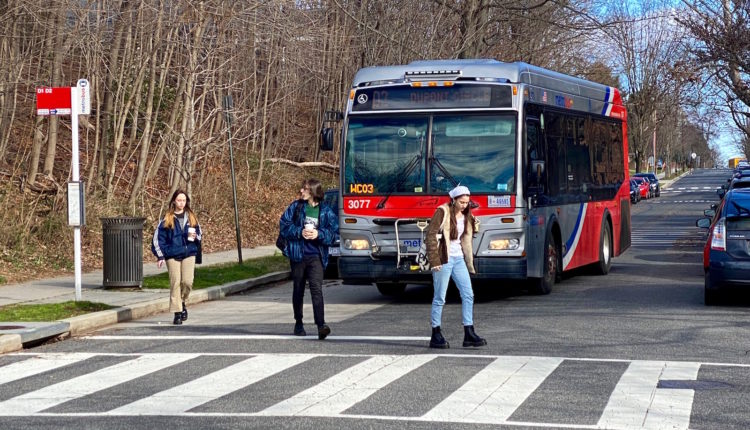
Petar Dimtchev: Don’t cut Glover Park’s already meager bus service
This week, the District of Columbia celebrated the second annual “Bus to Work Day.” It purposely coincided with Transit Equity Day, which honors Rosa Parks and recognizes public transit as a civil right. Increased access to public transit provides multiple benefits, from reducing greenhouse gas emissions to improving the quality of life of lower-income residents.

In light of these public policy goals, various municipalities, both domestic and international, are making their public transportation systems free. Yet, in spite of this trend, the Washington Metropolitan Area Transit Authority (WMATA) is proposing reductions to existing bus service in its fiscal year 2021 budget. While these changes will be felt citywide, they will have the greatest impact on neighborhoods that lack other sufficient public transport options.
Glover Park is one of these neighborhoods. Although it is home to an elementary school, two recreation centers, and a number of businesses along its commercial corridor, it is fairly isolated when it comes to public transit. There are just two dedicated bus routes that service Glover Park, the D1 and the D2, and they share largely the same route. The nearest Metrorail station is more than two miles away, and the 30s bus routes along Wisconsin Avenue serve the neighborhood only peripherally.
WMATA’s proposed budget increases spending on Metrorail while reducing spending on Metrobus. To achieve the latter, WMATA proposes to eliminate the D1 route and to consolidate the D2 with the G2 line — and to make matters worse, several of the 30s bus routes are also slated for elimination.
Operating only in rush hour, the D1 connects residential sections of Glover Park to downtown; the D2 operates in large part as a shuttle to the Dupont Circle Metro station via Georgetown. The proposed cuts put Glover Park in a Catch-22: a substantial reduction in its bus service in order for WMATA to be able to spend more money on a service that is not even close to the neighborhood.
WMATA explains that the changes are necessary not because of low ridership, but rather to eliminate redundancy, “streamline routes” and “make service simple, and easier to understand.” However, this argument is based on two faulty premises when applied to Glover Park: that there is other adequate available transit service and that the current lines are confusing. The only thing that is not easy to understand is why WMATA would substantially reduce a service that so many residents rely on.
Growing up in Glover Park, the D2 bus was a lifeline for me — I relied on it to get to school, extracurricular activities and my part-time job (refereeing Stoddert Soccer games at Jelleff and Francis fields). Each morning I would endeavor to get on at the first stop of the line, because the bus would be packed by the time it reached the stop in front of my house. I shared the D2 with a large number of my neighbors: other students, office workers, and employees at local businesses. The cross-section of riders showed the diversity of the neighborhood. Not much has changed, and as evidenced by recent community meetings, both the D1 and D2 continue to be routes that many residents heavily rely on.
Rather than reduce bus service, WMATA should follow the lead of municipalities that have taken measures to increase access to public buses.
Petar Dimtchev is a Ward 3 resident.
About commentaries
The DC Line welcomes commentaries representing various viewpoints on local issues of concern, but the opinions expressed do not represent those of The DC Line. Submissions of up to 850 words may be sent to editor Chris Kain at chriskain@thedcline.org.


Comments are closed.